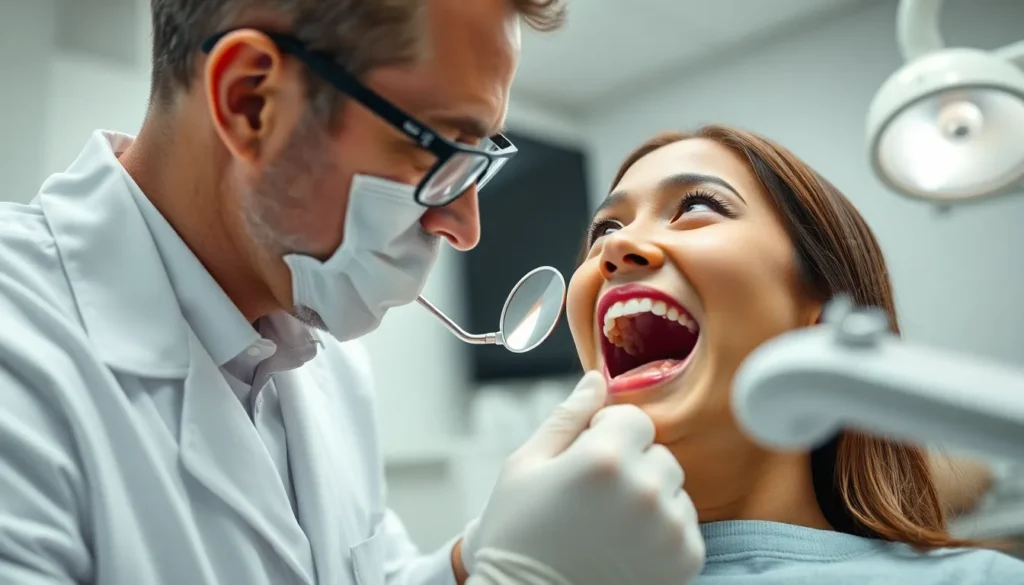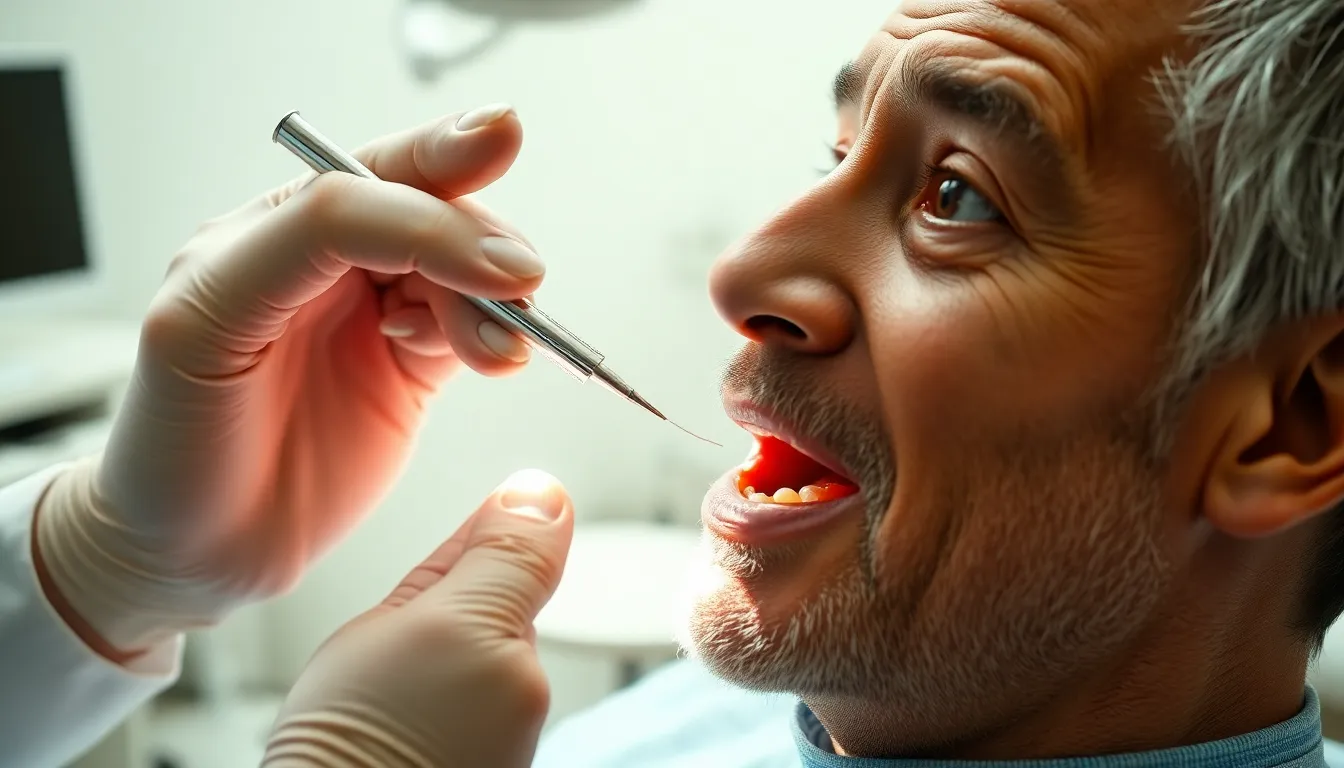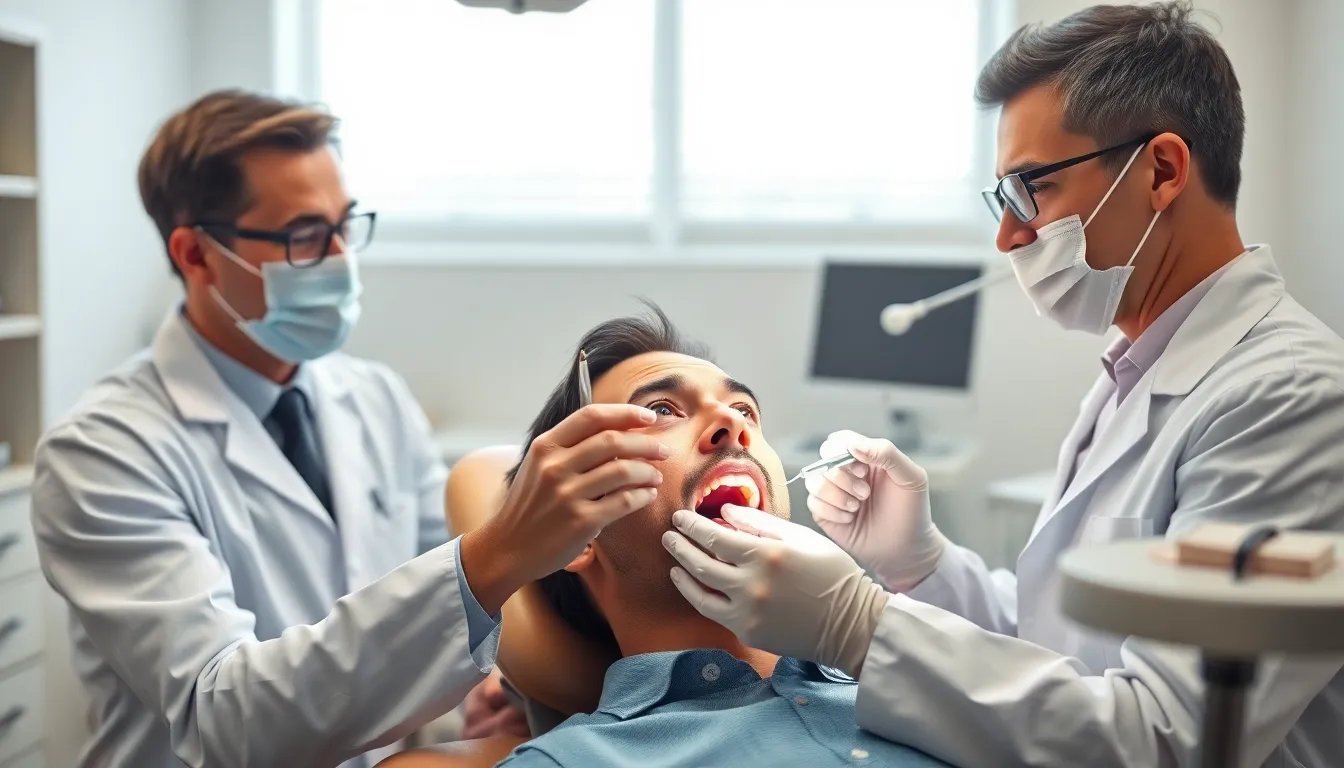Can cavities cause bad breath? If you’ve noticed an unpleasant odor that won’t go away even though brushing and flossing, tooth decay might be the culprit behind your halitosis.
When bacteria invade a cavity, they create a perfect environment for producing foul-smelling sulfur compounds. These microscopic organisms feed on food particles trapped in decayed teeth, releasing gases that contribute to persistent bad breath. Even if you’re diligent about oral hygiene, a hidden cavity can continue to harbor these odor-causing bacteria deep within your tooth structure where your toothbrush can’t reach.
Understanding the connection between cavities and bad breath is crucial for addressing both issues effectively. Not only can treating decay improve your breath, but it’ll also prevent more serious dental complications down the road.
The Connection Between Cavities and Bad Breath
Cavities create perfect environments for odor-causing bacteria to thrive, leading to persistent bad breath that’s resistant to brushing and mouthwash. These tiny holes in your teeth trap food particles and allow bacteria to multiply, producing volatile sulfur compounds with distinctively unpleasant odors.
Research from the Journal of Clinical Dentistry confirms that 85% of chronic halitosis cases stem from oral conditions, with tooth decay being a primary contributor. Bacteria inside cavities break down trapped food debris, releasing hydrogen sulfide and methyl mercaptan—the same compounds responsible for the smell of rotten eggs.
“Last month, a patient came to me confused about her persistent bad breath even though meticulous oral hygiene,” says Dr. Todd B. Harris. “After discovering three untreated cavities between her molars, we addressed the decay, and her breath issues resolved within days. This scenario plays out regularly in my practice.”
Your tooth decay doesn’t just cause localized problems. The bacteria from cavities can spread throughout your mouth, colonizing your tongue and other soft tissues, which multiplies the bad breath effect. The infection’s byproducts circulate in your saliva, affecting your entire oral cavity.
Untreated cavities progressively worsen both decay and breath problems. As the cavity deepens, it reaches the pulp where nerves and blood vessels reside, potentially causing abscesses that release even stronger odors. The combination of necrotic tissue, bacterial waste products, and infection creates a particularly potent form of halitosis that’s unmistakable to dental professionals.
What Causes Cavities in the First Place
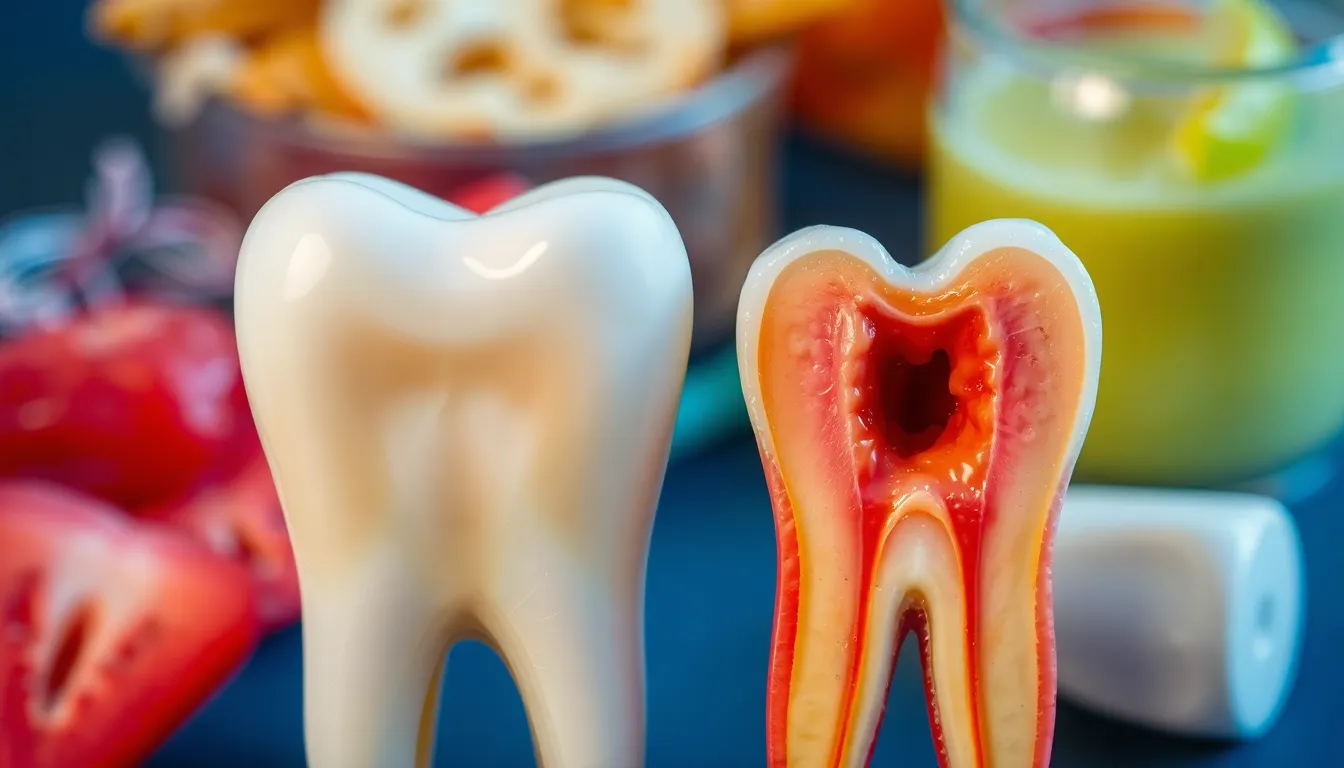
Cavities, or tooth decay, result from the breakdown of tooth enamel through a complex process that begins with plaque formation. This sticky, bacteria-filled substance gradually erodes the protective outer layer of your teeth, creating small holes or cavities in the tooth structure.
The Role of Bacteria in Tooth Decay
Bacteria naturally inhabit your mouth and form plaque, a biofilm that adheres to your teeth throughout the day. Exact bacterial strains, particularly Streptococcus mutans, produce acids when they metabolize sugars and starches from your diet. These acids directly attack tooth enamel, dissolving the mineral content and initiating the decay process. As the bacteria continue this acid production, the enamel weakens progressively until small openings form, marking the beginning of cavity development. Left untreated, these bacterial colonies thrive in the newly created spaces, accelerating decay and potentially contributing to bad breath issues.
How Food and Drink Contribute to Cavities
Your dietary choices play a crucial role in cavity formation by providing fuel for acid-producing bacteria. Sugary foods, carbonated drinks, and starchy items create the perfect environment for bacterial proliferation and subsequent acid production. Each time you consume these foods, bacteria feast on the sugars for approximately 20-30 minutes, generating acids that attack your enamel. Frequent snacking or sipping sugary beverages throughout the day creates a continuous acid bath for your teeth, significantly increasing decay risk. Regular brushing and flossing disrupt this process by removing plaque, but skipping these essential oral hygiene practices allows bacterial colonies to flourish undisturbed, accelerating cavity formation and potentially worsening breath odors as bacteria multiply in decayed areas.
How Cavities Lead to Bad Breath

Cavities create the perfect environment for bad breath to develop in your mouth. The connection between tooth decay and halitosis is stronger than many people realize, with exact mechanisms that directly link these two common dental issues.
Bacterial Activity and Odor Production
Tooth decay begins with plaque buildup—a sticky film harboring bacteria that produce acids capable of destroying your tooth enamel. These same bacteria release volatile sulfur compounds (VSCs), the primary culprits behind the foul smell associated with halitosis. Decayed portions of teeth provide ideal hiding spots for these microorganisms, making them difficult to remove through regular brushing and flossing. Studies show that the exact bacteria thriving in cavities emit gases with particularly unpleasant odors, creating a direct pathway from cavity to bad breath.
Dr. Todd B. Harris notes, “I’ve seen countless patients who come in complaining about persistent bad breath, unaware that their untreated cavities are the source. Once we address the decay, their breath issues often resolve dramatically within days.”
Trapped Food Particles and Decay
Cavities form holes and crevices in your teeth where food particles become easily trapped and difficult to remove. These food remnants decompose over time, fermenting in the warm, moist environment of your mouth and producing additional foul odors. The ongoing decay process itself generates an unpleasant smell as tooth tissue breaks down and deteriorates. If cavities progress and reach below your gum line, they frequently lead to gum infections or abscesses, intensifying bad breath problems. Dental professionals regularly observe that when food particles accumulate in cavities, patients experience worse breath in the morning and throughout the day, even after brushing.
Other Oral Health Issues That Cause Bad Breath
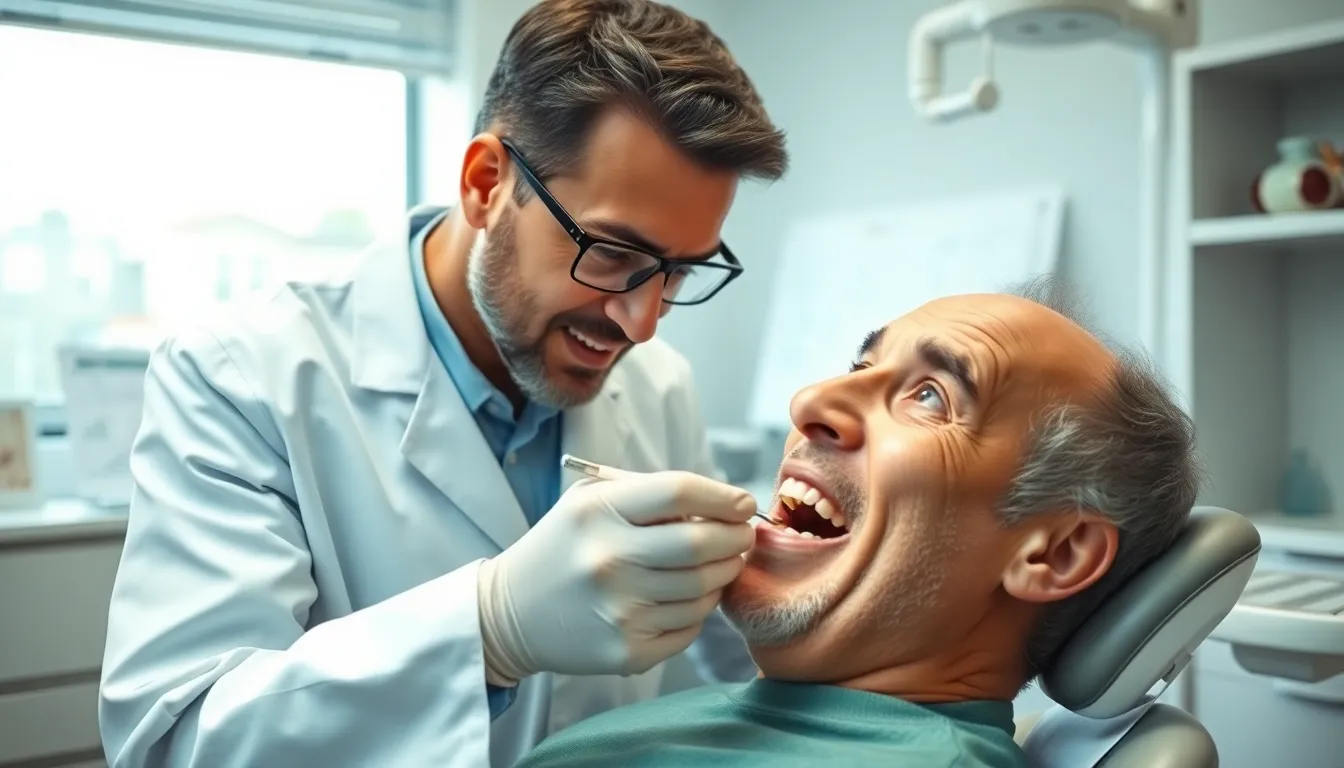
While cavities contribute significantly to bad breath, they’re not the only oral health issue responsible for halitosis. Several other dental conditions can lead to persistent unpleasant odors that affect your daily life and social interactions.
Gum Disease and Halitosis
Gum disease represents a major source of persistent bad breath problems. This inflammatory condition affects the tissues surrounding your teeth, creating deep pockets between gums and teeth where bacteria thrive and produce foul odors. The bacteria involved in periodontal disease generate potent volatile sulfur compounds, similar to those found in cavities but often more aggressive and difficult to eliminate through regular brushing alone. Bleeding, swollen gums indicate active infection that continuously releases unpleasant smells throughout the day.
“Many patients come to me confused about why their breath remains problematic even though diligent brushing,” notes Dr. Todd B. Harris. “In many cases, we discover underlying gum disease that’s been silently progressing. Treating the periodontal condition often resolves their chronic halitosis issues that mouthwash and brushing couldn’t fix.”
Dry Mouth Syndrome
Dry mouth creates ideal conditions for bad breath development by limiting your body’s natural defense against odor-causing bacteria. Saliva plays a crucial role in washing away food particles and neutralizing acids in your mouth. Without adequate saliva production, bacteria multiply rapidly on your tongue, gums, and between teeth, leading to intensified breath problems.
Sarah, a long-time patient at our practice, struggled with persistent morning breath that lingered throughout the day. After examining her medications, we discovered that her antihistamine was causing important dry mouth. By adjusting her medication schedule and implementing specialized dry mouth products, her breath quality improved dramatically within weeks.
Medications, certain medical conditions, mouth breathing, and dehydration commonly contribute to dry mouth syndrome. Drinking plenty of water, using sugar-free lozenges, and speaking with your dentist about specialized dry mouth products can help manage this condition and reduce associated breath problems.
Diagnosing Whether Your Bad Breath Comes From Cavities

Persistent bad breath that doesn’t improve with regular brushing might indicate cavity-related halitosis. Dentists can identify this connection during routine examinations by looking for visible decay and assessing your breath quality. A sour or bitter taste that lingers in your mouth even though good oral hygiene often signals tooth decay as the culprit behind your breath issues.
Self-assessment at home starts with noting when your bad breath occurs and whether it correlates with tooth pain or sensitivity. Morning breath that remains throughout the day, even after brushing, suggests trapped bacteria in decayed areas rather than just normal overnight buildup. Food particles consistently getting stuck in exact teeth points to potential cavities that require professional evaluation.
Dr. Todd B. Harris explains, “Many patients come to my office confused about why their breath remains unpleasant even though using mouthwash multiple times daily. Upon examination, we frequently discover hidden cavities where bacteria have established colonies, producing volatile sulfur compounds responsible for the odor. Treating these cavities often resolves breath issues within days.”
Dental professionals diagnose cavity-related halitosis through comprehensive examinations including:
- X-rays to detect decay between teeth and below the gum line
- Visual inspection for visible holes or discoloration
- Probing teeth to check for soft spots indicating enamel breakdown
- Intraoral cameras to view difficult-to-see areas where food might trap
The distinctive odor produced by decay-causing bacteria differs from other halitosis sources. Bacterial activity in cavities releases volatile sulfur compounds with a characteristic smell that trained professionals can identify. Your dentist can determine whether your bad breath stems from cavities or other conditions like gum disease by analyzing these exact odor patterns during your examination.
Treating Cavity-Related Bad Breath
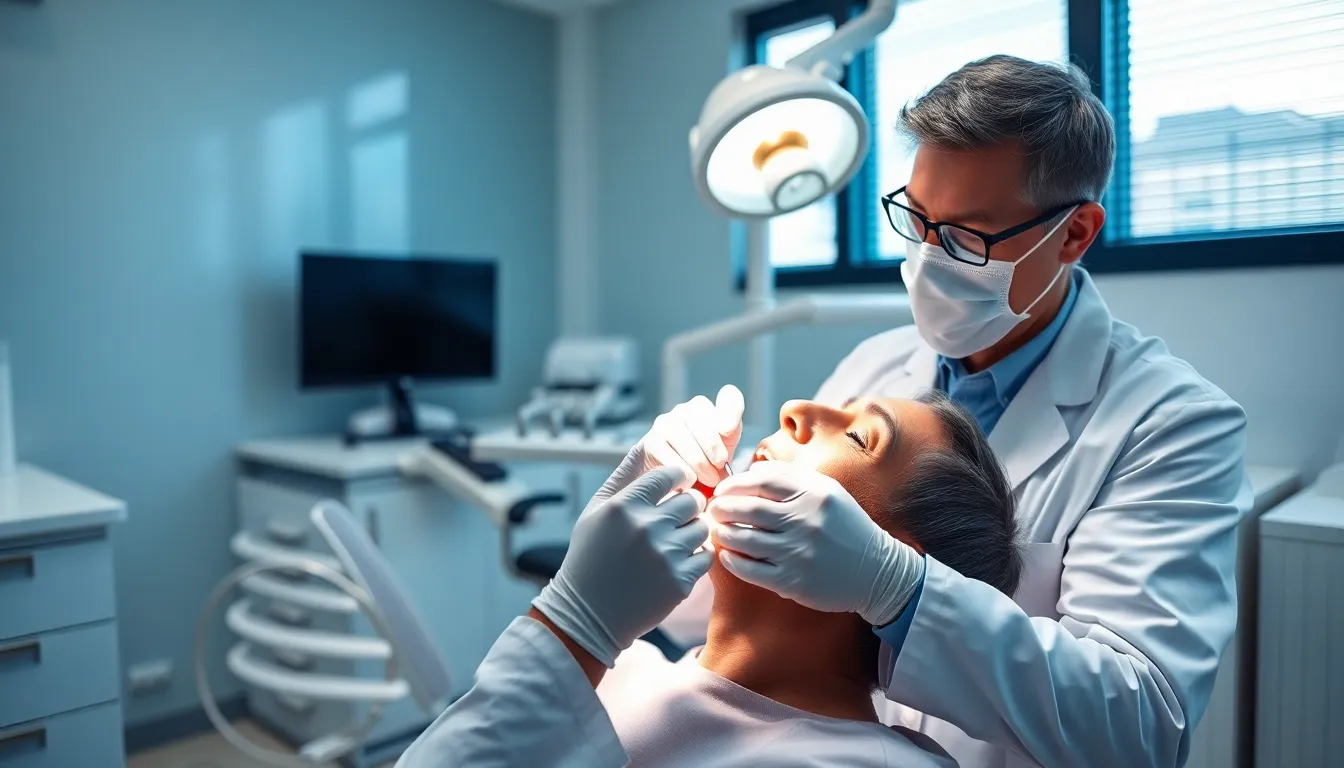
Addressing cavities directly is essential for eliminating bad breath caused by tooth decay. Proper treatment combines professional dental procedures with consistent home care to remove bacteria reservoirs and prevent new decay.
Dental Procedures for Cavities
Professional dental treatment effectively eliminates the source of decay-related bad breath. Your dentist will remove the decayed portion of the tooth and fill the cavity with composite resin, amalgam, or other filling materials to restore the tooth’s structure. For more severe cases where decay has reached the pulp, root canal therapy becomes necessary to remove infected tissue and seal the tooth. According to clinical observations, patients often report noticeable improvement in breath quality within 24-48 hours after cavity treatment. Extraction may be required for teeth damaged beyond repair, though this option is typically reserved for cases where other treatments aren’t viable. Dr. Todd B. Harris notes, “I’ve seen countless patients express surprise at how quickly their breath improves after we’ve treated their cavities—many don’t realize the two issues were connected until the problem is resolved.”
Conclusion
Bad breath and cavities share a important relationship that shouldn’t be overlooked. When bacteria feast on trapped food particles in decayed teeth they release foul-smelling compounds that contribute to persistent halitosis. Your chronic bad breath might be signaling deeper dental issues that require professional attention.
Taking action against cavities not only freshens your breath but protects your overall oral health. Remember that professional treatment combined with diligent home care offers the most effective solution with many patients experiencing breath improvement within 48 hours after cavity treatment.
Don’t ignore persistent bad breath – it’s your body’s way of alerting you to potential dental problems that deserve attention. Addressing cavities promptly can save you from more serious complications while giving you the confidence of fresher breath.
Frequently Asked Questions
Can cavities really cause bad breath?
Yes, cavities can definitely cause bad breath. When tooth decay creates holes in your teeth, these spaces become perfect hiding spots for bacteria that produce foul-smelling sulfur compounds. Food particles also get trapped in these cavities, further contributing to unpleasant odors. Research shows that about 85% of chronic bad breath cases stem from oral conditions, with tooth decay being a major contributor.
How quickly will my breath improve after treating cavities?
Most patients notice significant improvement in their breath within 24-48 hours after cavity treatment. Once the decayed portion of the tooth is removed and filled, the source of odor-causing bacteria is eliminated. Dentists frequently report that patients are surprised by how quickly their breath freshens after addressing their cavities, often not realizing the connection until after treatment.
Can I tell if I have cavity-related bad breath without seeing a dentist?
You might suspect cavity-related bad breath if you experience persistent halitosis despite regular brushing and flossing. Other signs include bad breath that correlates with tooth pain or sensitivity, or breath that worsens throughout the day despite oral hygiene efforts. However, a professional dental examination with X-rays is the only definitive way to confirm if cavities are causing your bad breath.
What causes cavities to form in the first place?
Cavities form when bacteria in your mouth, particularly Streptococcus mutans, produce acids after consuming sugars and starches. These acids attack tooth enamel, breaking it down over time. Frequent snacking, sugary beverages, and poor oral hygiene create ideal conditions for cavity development. Without regular brushing and flossing to disrupt plaque formation, bacteria flourish, accelerating tooth decay and contributing to bad breath.
Are there other oral health issues besides cavities that cause bad breath?
Yes, several other oral conditions contribute to halitosis. Gum disease creates deep pockets where bacteria thrive and produce sulfur compounds. Dry mouth syndrome reduces saliva, which normally washes away food particles and neutralizes acids. Tongue coating, oral infections, and certain dental appliances can also trap bacteria. Unlike temporary food-related bad breath, these conditions cause persistent halitosis that requires professional treatment.
How do dentists diagnose cavity-related bad breath?
Dentists use comprehensive examinations to diagnose cavity-related halitosis. This includes visual inspection, dental X-rays to detect hidden decay, and sometimes breath assessment. The distinctive odor produced by decay-causing bacteria helps dentists determine if cavities are the source of bad breath rather than other conditions. Many patients with persistent bad breath despite good oral hygiene are found to have undetected cavities during these examinations.
What treatments are available for cavity-related bad breath?
Treatment involves addressing both the cavities and the resulting bad breath. Dentists remove decayed portions of teeth and fill the cavities with composite resin or amalgam materials. For severe cases, root canal therapy may be necessary to remove infected tissue. Home care is equally important—brushing twice daily, flossing, using antimicrobial mouthwash, and maintaining regular dental check-ups helps prevent new decay and keep breath fresh.
Can cavity-related bad breath return after treatment?
Yes, cavity-related bad breath can return if new cavities develop or if oral hygiene practices aren’t maintained. After treatment, it’s essential to follow a consistent oral care routine including brushing, flossing, and regular dental check-ups. Limiting sugary foods and drinks helps prevent new cavities from forming. With proper care and maintenance, most patients can keep cavity-related bad breath from returning.

